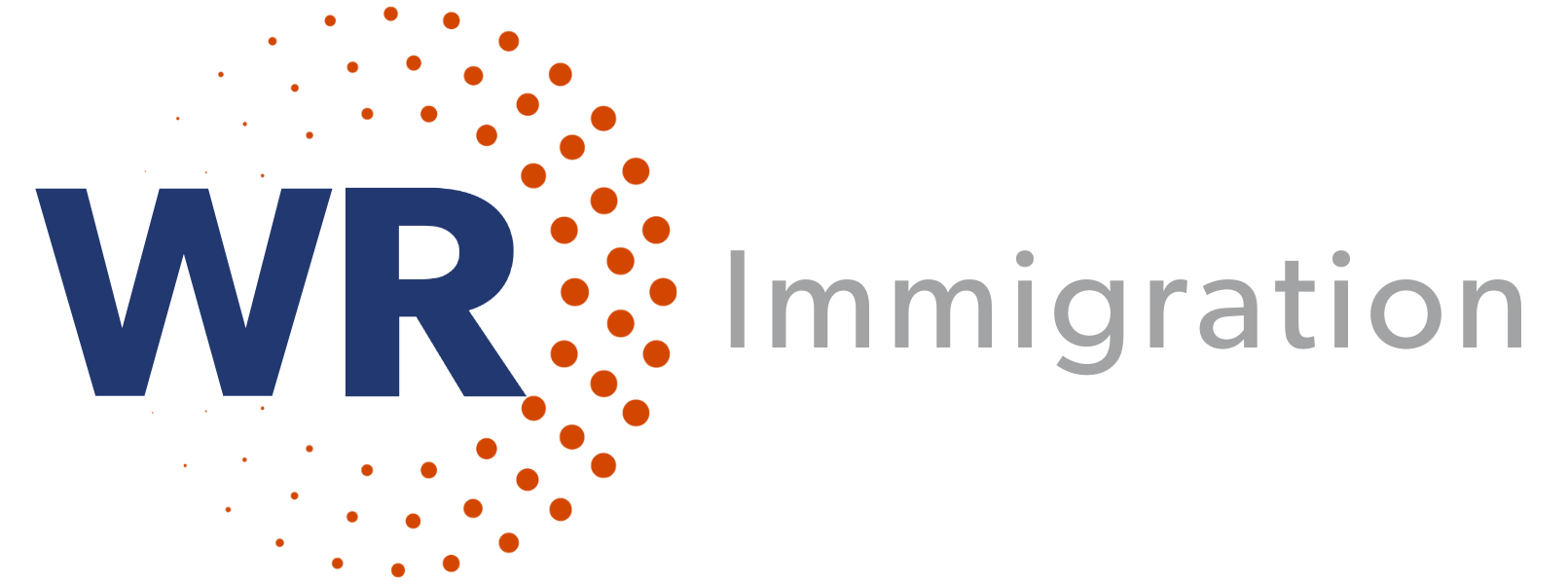In this edition, find the latest news on USCIS’ Organizational Accounts, H-2B Visa Cap Reached, USCIS Filing Fees, and much more!
USCIS to Launch Organizational Accounts, Enabling ‘Online Collaboration’ and Submission of H-1B Registrations
U.S. Citizenship and Immigration Services (USCIS) plans to launch organizational accounts for non-cap filings and the fiscal year (FY) 2025 H-1B cap season. Organizational accounts “will allow multiple individuals within an organization, such as a company or other business entity, and their legal representatives to collaborate on and prepare H-1B registrations, Form I-129, Petition for a Nonimmigrant Worker, and associated Form I-907, Request for Premium Processing Service,” USCIS said. The agency also plans to introduce online filing for I-129 H-1B petitions and H-1B I-907 premium processing service.
USCIS expects to launch the organizational accounts in February 2024, with online filing of Forms I-129 and I-907 following shortly thereafter. USCIS will transition the paper filing location for Forms I-129 and I-907 from service centers to the USCIS lockbox.
Details:
- USCIS news release (Jan. 12, 2024).
Cap Reached for Additional Returning Worker H-2B Visas for First Half of FY 2024
On January 12, 2023, U.S. Citizenship and Immigration Services (USCIS) announced that it has received enough petitions to reach the cap for the additional 20,716 H-2B visas made available for returning workers for the first half of fiscal year 2024 with start dates on or before March 31, 2024, under the
H-2B supplemental cap temporary final rule. USCIS said January 9, 2024, was the final receipt date for petitions requesting supplemental H-2B visas under the FY 2024 first half returning worker allocation.
USCIS said it is still accepting petitions for H-2B nonimmigrant workers with start dates on or before March 31, 2024, for the additional 20,000 visas allotted for nationals of El Salvador, Guatemala, Honduras, Haiti, Colombia, Ecuador, and Costa Rica (country-specific allocation), as well as those who are exempt from the congressionally mandated cap. USCIS encouraged petitioners with start dates on or before March 31, 2024, whose workers were not accepted for the 20,716 returning worker allocation, to file under the country-specific allocation while visas remain available. As of January 12, 2024, USCIS said it has received petitions requesting 4,500 workers under the 20,000 visas set aside for nationals of El Salvador, Guatemala, Honduras, Haiti, Colombia, Ecuador, and Costa Rica.
Details:
- USCIS alert (Jan. 12, 2024).
USCIS Filing Fee Increases May Arrive This Spring
Employers and other immigration benefit requestors may see significant fee hikes to USCIS filing fees as soon as next month. This is in addition to the increase in Premium Processing fees that are effective February 26, 2024. The U.S. Department of Homeland Security (DHS) previously posted a proposed rule in the Federal Register in January 2023 proposing increases to various forms and applications. The current fee schedule in effect dates back to December 2016, the last time the USCIS increased their filing fees. As a primarily fee-funded agency, the new proposed fees come at a time when USCIS seeks to increase revenue to cover their operational costs, federally mandated pay raises, increase personnel, and improve the quality of the services they provide.
What Changes Can Be Expected?
Some of the proposed increases to commonly filed case types are noted in the chart below.
| Benefit Request | Current Fee | Proposed Fee | Change in Fees |
| I-129 Petition for a Nonimmigrant Worker | $460 (for all classifications) | $780 (H-1B) | $320 |
| $1,385 (L-1) | $925 | ||
| $1,055 (O-1) | $595 | ||
| $1,015 (E, TN, H-3, P, Q, R) | $555 | ||
| H-1B Registration Fee | $10 | $215 | $205 |
| I-539 Application to Extend/Change Nonimmigrant Status | $370 | $525 (online filing) | $155 |
| $620 (paper filing) | $250 | ||
| I-765 Application for Employment Authorization | $410 | $555 (online filing) | $145 |
| $650 (paper filing) | $240 | ||
| I-140 Immigration Petition for Alien Worker | $700 | $715 | $15 |
| I-485 Application to Register Permanent Residence or Adjust Status | $1,225 | $1,540 | $315 |
| I-526/I-526E Immigrant Petition by Standalone/Regional Center Investor | $3,675 | $11,160 | $7,485 |
| I-751 Petition to Remove Conditions on Residence | $680 | $1,195 | $515 |
| N-400 Application for Naturalization | $725 | $760 | $35 |
Other significant proposed changes include the following:
- Incorporating biometrics costs into the main benefit fee and removing the separate biometrics services fee
- Eliminating No-Cost EAD and Advance Parole for adjustment of status (AOS) applicants–separate filing fees will be required for Forms I-485, I-765, and I-131
- Eliminating the discounted filing fee for AOS applicants for children filing Form I-485 along with their parent(s)
- Establishing separate fees for various I-129 visa classifications
- Revising the premium processing timeframe interpretation from calendar days to business days
- Instituting lower filing fees for certain forms filed online
- Including a surcharge $600 asylum processing fee for Forms I-129 and I-140 petitions to collect funding for asylum case processing from employers
When Will These Changes Take Effect?
The USCIS Final Fee Rule could be published as a final rule within the next few weeks. The White House’s Office of Information and Regulatory Affairs (OIRA) received the final rule containing the new fees on January 8, 2024. OIRA has up to 90 days to complete its review, but finalizing the rule may be prioritized sooner given the amount of time that has passed since the last fee increase. Based on previous fee rules, once published in the Federal Register, the new fees will likely take effect at least 60 days later.
Employers with foreign national employees will likely need to account for budgetary adjustments to accommodate the increased filing fees. In the meantime, WR will continue to closely monitor for updates on the adjusted fee increases.
Details:
DOL Increases Civil Monetary Penalties for Certain Immigration-Related Employer Violations
Effective January 15, 2024, as part of annual inflation adjustments, the Department of Labor (DOL) is increasing D-1, H-1B, H-2A, and H-2B civil monetary penalties it assesses or enforces for employer violations.
To compute the 2024 annual adjustment, DOL multiplied the most recent penalty amount for each applicable penalty by the multiplier, 1.03241, and rounded to the nearest dollar.
Details:
- DOL final rule, 89 Fed. Reg. 1810 (Jan. 11, 2024).
USCIS Issues Guidance on ‘Ability to Pay’ Requirement When Adjustment Applicants Change Employers
On January 5, 2024, U.S. Citizenship and Immigration Services issued policy guidance, effective immediately, on how it analyzes an employer’s ability to pay the proffered wage for immigrant petitions in certain first, second, and third preference employment-based immigrant visa classifications, including instances when the sponsored worker changes employers.
The guidance notes that generally, employers seeking to classify prospective or current employees under the first, second, and third preference employment-based immigrant visa classifications that require a job offer “must demonstrate their continuing ability to pay the proffered wage to the beneficiary as of the priority date of the immigrant petition until the beneficiary obtains lawful permanent residence.”
The updated guidance, which applies to petitions filed on or after January 5, 2024, explains that when the beneficiary of a Form I-140, Immigrant Petition for Alien Workers, moves (or “ports”) to a new employer while the Form I-140 is pending, USCIS determines whether the petitioner meets the ability to pay requirements “only by reviewing the facts in existence from the priority date until the filing of the Form I-140.”
Details:
- USCIS alert (Jan. 5, 2024).
- USCIS Policy Alert, PA-2024-01 (Jan. 5, 2024).
DOS Issues ‘Bright Forecast’ for Worldwide Visa Operations
On January 2, 2024, the Department of State (DOS) announced a “bright forecast” for worldwide visa operations. DOS said its visa processing capacity “has recovered faster than projected. We issued more nonimmigrant visas (NIVs) worldwide in 2023 than in any year since 2015.”
DOS said it remains focused on “reducing wait times for visitor visa applicants who require an in-person interview, particularly in countries where demand remains at unprecedented levels.” Its goal is for more than 90 percent of its overseas posts to have visitor visa interview wait times under 90 days in 2024.
DOS noted that its 230 U.S. embassies and consulates issued more than 10.4 million visas globally in fiscal year 2023. The agency attributed its progress in part to improved efficiency through interview waivers in several key visa categories, including for many students and temporary workers. Additionally, DOS said, applicants renewing nonimmigrant visas in the same classification within 48 months of the prior visa’s expiration date can apply without an in-person interview in their countries of nationality or residence. “This continues to be one of our best tools to reduce interview appointment wait times while continuing to make rigorous national security decisions in every case,” DOS said.
In 2023, DOS said, it (1) prioritized student and academic exchange visitor visa interviews to facilitate study at U.S. universities and colleges; (2) processed seasonal agricultural and nonagricultural worker visas, issuing a “record-breaking 442,000 visas to H-2A and H-2B temporary workers in 2023, with nearly 90 percent going to qualified workers from Mexico, El Salvador, Guatemala, and Honduras”; (3) issued a “record-breaking 365,000 nonimmigrant visas to airline and shipping crewmembers”; and (4) issued 590,000 nonimmigrant and immigrant visas, “the most ever,” to high-skilled workers and executives in a range of sectors, including emerging technology and health care. “Among those, we issued nearly double the number of EB-3 [green cards] in FY 2023 than in FY 2019, the last full year before the pandemic.” DOS also issued all the available diversity green card lottery visas during the DV-2023 program year.
Details:
- DOS Worldwide Visa Operations: Update (Jan. 2, 2024).


